Please note: Due to current conditions, Fraunhofer MEVIS, Ars Electronica and the artists will terminate the project and refrain from presenting the final results.
STEAM Imaging is a program organized by the Fraunhofer Institute for Digital Medicine MEVIS in Bremen together with Ars Electronica and the International Fraunhofer Talent School Bremen. It enables artists to spend time at MEVIS in order to link science with the approaches of digital art. The acronym STEAM stands for the connection of science, technology and mathematics with the world of art. An integral part of STEAM are several workshops designed to fascinate young people for the unusual alliance of art and science. In 2017, Taiwanese media artist Yen Tzu Chang developed a performance in which she thematized the future role of machines in surgery.
What can be expected from the patient Bonsai, the cooperation and the residencies, we talked about with the two artists Ernest Wu and Jake Tan, as well as Bianka Hofmann, responsible developer and producer in charge of science communication projects, and Sabrina Haase, MEVIS researcher and expert for MINT workshops.
The residency is taking place for the second time this year. In which aspects was the first edition particularly successful?
Bianka Hofmann: The first edition helped us find a suitable residency format for the institute. Our idea was not only to explain our research and make it accessible to others, but also to help the scientists come to grips with the consequences of their work and to integrate the artist residency as a dialogue-oriented, hands-on science communication format. We have embedded workshops for young people as an integral part of our MINT (mathematics, informatics, natural sciences, and technology) activities. Doing so, we have created a space in which both artists and scientists can teach and learn, and in which other actors, in this case pupils, can be involved. In addition to discussing the effects of our research, we also wanted to communicate MINT knowledge and how to use the new technologies. We experienced great success with our STEAM (science, technology, engineering, art, and mathematics) workshop, in addition to the work of artist Yen Tzu Chang, whose performance installation “Whose Scalpel” was shown at the 2017 Festival in Linz, Munich, Berlin, and London. Being able to participate in the artistic process was a fascinating, new experience for the team at Fraunhofer MEVIS.
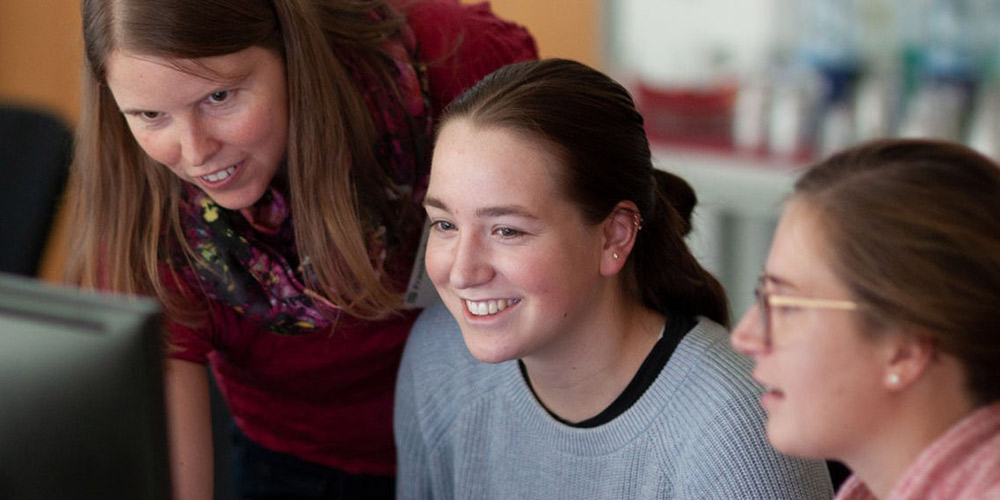
What was the pivotal point in deciding to continue the residency?
Sabrina Haase: In the first residency, artist Yen Tzu Chang gave us the opportunity to integrate sound art into our MINT workshops. It was a lot of fun and opened up new perspectives for me. By continuing the residency, we have had the opportunity to integrate more art forms: Jake Tan and Ernest Wu incorporate interactive media, digital and traditional art making. I was motivated by the pupils’ feedback and the extended space to make MINT topics accessible and even gain new insight into familiar topics.
Bianka Hofmann: We were motivated by the positive feedback from all participants, including artists, pupils, scientists, science communicators, and partners in the fields of science and art education. We have adapted the current residency so that the artists can reside longer at the institute, and we now offer a STEAM workshop for students from the Nanyang Technological University in Singapore in addition to the student workshops in Bremen and Linz. Our goal is to observe and discuss our research topics beyond our own disciplines and to build a transdisciplinary culture of learning and working with others.
How did this project come about for you?
Ernest Wu: To begin, both of us have our own artistic practices and interests. Jake considers himself a technologist and is adept at a variety of software and hardware. I on the other hand consider myself a visual artist who works with a variety of visual and time-based mediums. The project, In Vivo, came about with a perfectly timed residency open call by Fraunhofer MEVIS, and Ars Electronica in collaboration with International Fraunhofer Talent School Bremen. We started thinking about the project through a series of conversations about how we are progressing individually as artists but also our interests in combining certain research interests that we were pursuing independent of each other.
Jake Tan: There was an open call at the Nanyang Technological University Singapore that was headed by my supervisor, Assoc. Prof. Ina Conradi, who has worked before with Fraunhofer MEVIS and Ars Electronica. The project deals directly with the question of what happens if a coma patient cannot speak, move or react? Can we find a way to enable a new way of communication with technology and science? As artists we deal a lot with metaphors and here we use a bonsai as a metaphor for a patient who cannot speak or move. Using medical equipment, we want to explore questions: Does anything indicate liveliness? And does liveliness also mean consciousness? We have no answers and are interested in the potential of science to answer such questions.
Ernest Wu: The difference in our approach is – and we think this is the key – that unlike traditional research that tries to understand plants with people, we use plants to understand people. We are interested in looking into a living being, but we do not know whether the information generated in this way brings us closer to understanding what makes something alive.
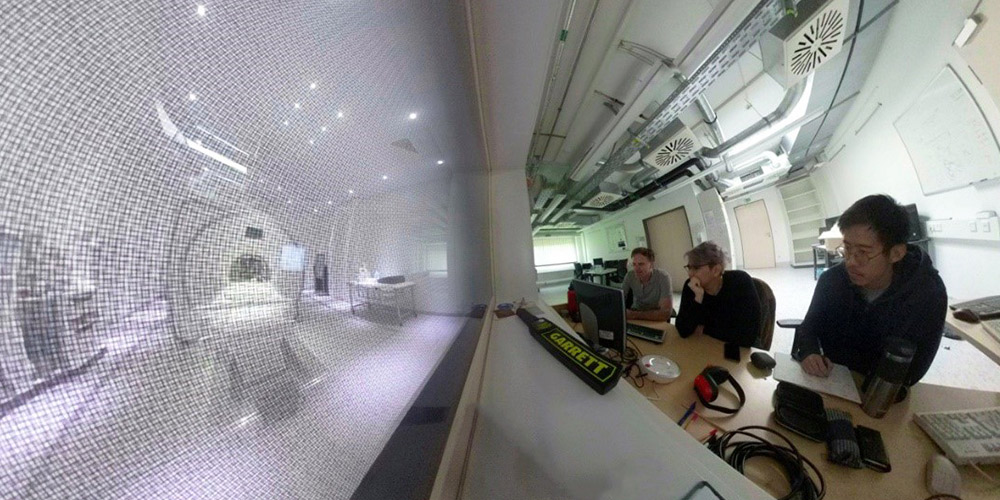
What do you wish from the cooperation? What role does the Fraunhofer Institute see itself playing within the framework of the cooperation?
Sabrina Haase: As a scientist at Fraunhofer MEVIS, I personally see myself as a dialogue partner that sees eye to eye with all partners and artists. I also request this from all participants during the residency, the first of which was a complete success for me. My main desire is that we learn from each other and gain deeper insights into other disciplines.
Bianka Hofmann: Fraunhofer MEVIS offers artists the opportunity to explore new possibilities in digital medicine in a collaborative process and develop a work of art. In addition, the artists, alongside MEVIS scientists, will make these topics accessible to a broader public that may not otherwise be concerned with them: through their work, of course, but also through the STEAM workshops. The further contextualization of the research topics at the institute, such as the effects of AI on healthcare, physicians, and, of course, patients, or questions about algorithms that are biased, about data security and lack of transparency for patients, is a necessary step towards the conscious development of new technologies and conscious treatment of these consequences for society. Alongside artists, Fraunhofer MEVIS wants to inspire laypeople to deal with these topics. We want to support the public to hold informed discussions and make well-informed decisions. Fraunhofer MEVIS also wishes to engage researchers to question what they define in their work as responsible and future-oriented. Our goal is to provide space for sustainable science communication involving different actors in society and different expertise at the institute.
What does this look like from the perspective of the artists?
Jake Tan: In terms of collaboration with Fraunhofer MEVIS and Ars Electronica, we are very happy with the resources that both institutions can provide that contribute directly to the outcome of the residency. As artists, this transdisciplinary approach to the making of an artwork is something that we highly value. There are negotiations about what is possible with existing technology and exploring the ways that such technology can be repurposed for other uses. With the support from Ars, we have the opportunity to tap into their previous experiences working with artists with regards to fabrication and installations and the discussions that come from a tech arts festival.
Ernest Wu: Because the work is transdisciplinary, we hope that the intersections between our questions and the eventual outcomes can inspire and invite other members of society to join in conversations about tech and new possibilities in digital medicine. One direct outcome, which is important to mention is the integration of the STEAM workshops as part of the residency. For both of us, this is our first time facilitating a workshop like this and we hope that the participants will engage with us and in turn we hope to learn about their concerns as well.

What is the challenge of interdisciplinary work? What is the benefit?
Sabrina Haase: At our institute in the field of digital medicine, we are used to working interdisciplinarily. However, almost all scientists here are mathematicians, computer scientists, or physicists, which might make collaborative work a little easier, but also limits it somewhat by focusing primarily on STEM topics. Linking our research topics with art, for example, offers scientists new ways of viewing and approaching problems. Usually, we work almost exclusively on familiar processes, analytically finding solutions for our field of expertise. This is required due to digital medicine’s high quality assurance standards. It is rare to integrate explorative creativity into the process and be open to new results. That is what makes this interdisciplinary residency so special.
Jake Tan: The challenges are many but foremost is the unknowability of what we can gather, what information, what we can learn, what data we can acquire and the range of what we don’t know. Everyone has their own expertise and have different backgrounds and can approach the same problem in different ways. This can prove challenging when finding out the similarities between two completely separate disciplines but can also be incredibly rewarding when an intersection is found amidst all the differences. In science, there is a hypothesis and an experiment are carried out to disprove or to support that hypothesis. In art, the end goal is not as well defined. There is an inclination to find out something, and a process of figuring out how to go about finding it. The enrichment then is finding the sweet spot between different processes and this is both the challenge and the reward.
What are the advantages of the residency format?
Bianka Hofmann: We have had the extraordinary opportunity to explore other approaches to topics in digital medicine in the process together with our international partners and artists and the younger generation, and also to pursue transdisciplinary paths in the teaching of MINT topics through the STEAM workshops, which is exceptionally inspiring. Teaching and learning in different age groups has also enriched us. We want to nurture and strengthen the talents of everyone involved. Cross-disciplinary and cross-generational education is an essential topic for the future. Through the residency, we also link partners, creating connections in Germany between the Walle School Center in Bremen and our institute and the Fraunhofer Talent School, and internationally to Ars Electronica and Nanyang Technological University in Singapore.
Ernest Wu: Artists usually tackle personal topics, philosophical ideals or cultural and community issues. And in many cases, the artist is always a little too far away from the other big issues or lack the resources to pursue it. Through this unique process-oriented residency, we were able to understand bigger ethical questions regarding the societal impact through ever advancing medical technology. Access and agency to first-hand information about ethical and social implications regarding modern day medicine has made tremendous impact on how we tackle the art making process during the residency.
Jake Tan: We are very happy that with this residency we have the time to explore questions in an environment like Fraunhofer MEVIS where arts is not the main consideration but meeting people with a willingness to engage with art anyway. The exchange of ideas and thinking processes is valuable for both us and the people we have come into contact with as a result of the residency. In addition, as artists, any kind of institutional and financial support towards making art is always welcome and we are very honoured to be offered the opportunity to participate in this STEAM Imaging residency.
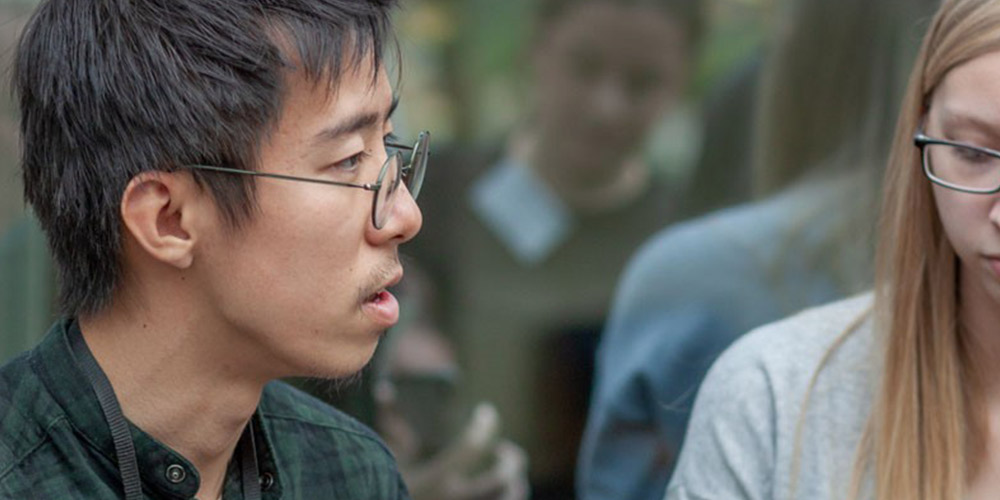
The International Fraunhofer Talent School Bremen begins with young people. What visions result from the integration of art?
Bianka Hofmann: For many years, MEVIS experts have been inspiring people in a vivid and interactive way for the manifold applications that computer science now has in medicine. The workshop at the art residency has a special focus. It is conceived and organized by artists and scientists alike. This gives the young people an insight into the research taking place at MEVIS as well as into the manifold possibilities of media art.
Sabrina Haase: Our vision is to free young people from thinking the way they do in school. Like the work of scientists, this is highly oriented to analysis, performance, and solutions. This vision allows them to develop approaches to solving problems from different perspectives. The same applies to us scientists, of course: thinking beyond familiar patterns can only have a positive influence and promote creativity in problem-solving approaches. For me, art stands for a discipline with different thought patterns than those taught and lived in the MINT sciences – thus, art can be seen as a way to enrich the discovery of solutions.
Bianka Hofmann: Pupils and students can concentrate on their interests and talents and relate to the content topics without being fixated on external guidelines and goals. We also want participants to feel their talents and preferences and be able to try them out – and experience how to deal with new technologies in a self-determined way and with MINT topics in a creative and explorative way. In order to be prepared for the future, young people must increasingly be able to think and work transdisciplinarily, and this workshop is intended to promote this.
Ernest Wu: It is not our intention to push young people in a particular direction. Instead, we want to enable them to find out for themselves what they would actually like to do.
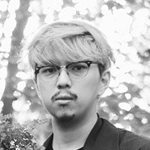
Jake TAN (b.1994, Singapore) dreams in code. His works explore the blurring boundaries between humans, machines and nature; creating thought-provoking interactions and experiences that question what it is to be a human in a society of machines. Traversing physical spaces and sculptures, he speaks the language of both man and machine.
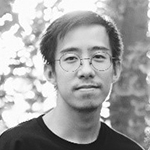
Ernest WU (b.1991, Singapore) uses the camera as a tool for meditation, exploring the possibilities of image-making, challenging traditional ways of looking at images through unconventional methods of creation and presentation. His projects adopt these unique methods to explore questions of existence and the mortal nature of things.
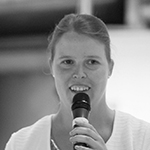
Sabrina Haase studied mathematics at the University of Bremen. Since 2009 she is working at the Fraunhofer Institute for Digital Medicine MEVIS where she is coordinating international research & industry projects. Her previous research at Fraunhofer MEVIS entailed bio-physical procedures for mathematical modeling and simulation of thermal therapies as means of improving the therapies’ success. Currently, she is also focusing on the software quality of medical device components and is interested in the regulatory aspects for the certification of medical products. Since many years she is expanding and leading the educational offerings the institute provides to up-and-coming young researchers.

Bianka Hofmann is an award-winning producer and developer of content and formats for science and technology communication. She creates spaces to connect people from various fields for cross-disciplinary conversation, cooperation, and co-creation to examine societal relevant topics and make them accessible to the public through interactive and artistic approaches. For over 15 years, she has developed content and formats for companies, universities, research institutions such as stereoscopic 3D, and 360 immersive digital experiences, short-films, interactive exhibits, installation art, STEAM workshops, kid’s college, teacher enhancement projects, and an process-oriented artist-in-residence program which have taken place at Ars Electronica Center & Festival, Austria, German Museum of Technology, Media Art Nexus NTU, Singapore, Raw Science Film Festival, UCLA Art Sci Center + Lab, US, and at many other venues. Currently, she works as Head of Corporate Communication at the Fraunhofer Institute for Digital Medicine MEVIS.
